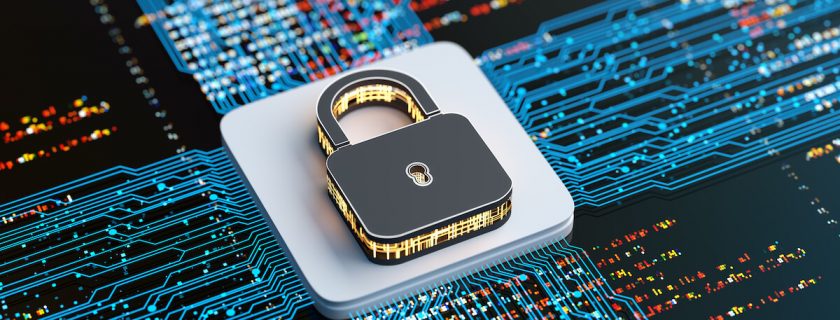End-to-End Encryption (E2EE) is a method of encryption where data or messages are encrypted on the sender’s device and can only be decrypted on the recipient’s device. This means that the data remains encrypted throughout its journey, including during storage or transmission through servers or intermediary infrastructure. Only users with the correct encryption keys can read or decrypt the information. E2EE aims to provide the highest level of security against unauthorized access or interception, both from internal and external sources.
In the ever-evolving landscape of cybersecurity, safeguarding corporate data has become a paramount concern for organizations worldwide. One of the forefront technologies addressing this challenge is End-to-End Encryption (E2EE). This article explores the significance of E2EE in protecting sensitive corporate information, highlighting its features, benefits, and the role it plays in ensuring the confidentiality and integrity of valuable data.
Understanding End-to-End Encryption:
End-to-End Encryption is a security measure that ensures data is encrypted on the sender’s device and only decrypted on the recipient’s device, making it nearly impossible for unauthorized entities to intercept or access the information in transit. This level of encryption provides a robust defense against various cyber threats and unauthorized access.
End-to-End Encryption (E2EE) offers numerous benefits for corporate data protection, creating a robust security framework that addresses various concerns and challenges faced by organizations. Here’s a more detailed explanation of the benefits:
1. Complete Data Security:
End-to-End Encryption ensures that data is encrypted on the sender’s device and remains encrypted until it reaches the intended recipient’s device. This comprehensive encryption methodology guarantees that only authorized parties possessing the decryption keys can access and understand the information. It provides an unparalleled level of data security, making it exceptionally challenging for unauthorized entities, including hackers and cybercriminals, to intercept or compromise sensitive information.
2. User Privacy:
One of the primary advantages of E2EE is its ability to protect user privacy. In a world where privacy concerns are paramount, E2EE ensures that even service providers or intermediaries facilitating the communication do not have access to the content of the data being transmitted. This means that individuals can communicate, share files, or exchange information without fear of surveillance or data mining by third parties.
3. Data Integrity:
E2EE not only focuses on confidentiality but also ensures data integrity. By encrypting data end-to-end, it prevents any tampering, alteration, or unauthorized modifications during the transmission process. This aspect is crucial for maintaining the accuracy and reliability of corporate data, especially when it comes to critical information such as financial transactions, legal documents, or sensitive communications.
4. Mitigating Insider Threats:
Insider threats, whether intentional or unintentional, pose a significant risk to corporate data. E2EE acts as a powerful deterrent against such threats by restricting access to sensitive information only to those with the appropriate decryption keys. This means that even employees within the organization cannot misuse or leak confidential data, providing an additional layer of protection.
5. Securing Communication Channels:
Communication channels, including emails, instant messaging, and file transfers, are common targets for cyber attacks. E2EE secures these channels by encrypting the data throughout its journey. This ensures that even if the communication is intercepted, the encrypted data remains unreadable and unusable without the proper keys. This is particularly beneficial for remote workers or those accessing corporate networks from different locations.
6. Compliance with Data Protection Regulations:
With the increasing stringency of data protection regulations globally, compliance has become a critical aspect of corporate operations. E2EE aligns with these regulations by providing a robust security mechanism for safeguarding sensitive information. Companies that implement E2EE are better positioned to meet the stringent requirements of data protection laws, avoiding potential legal consequences and reputational damage.
7. Building Trust with Clients and Partners:
Implementing E2EE not only enhances internal security but also contributes to building trust with clients, partners, and stakeholders. In an environment where data breaches can result in severe consequences, demonstrating a commitment to securing sensitive information fosters a sense of trust. Clients and partners are more likely to entrust their data to an organization that takes proactive measures to protect it.
Understanding VLAN: Definition, Functions, Types, and Benefits
Implementing End-to-End Encryption:
- Choose Appropriate Communication Platforms: Select communication platforms and tools that offer robust E2EE features. Many messaging apps, email providers, and collaboration tools now provide end-to-end encryption options.
- Employee Training and Awareness: Educate employees about the importance of E2EE and how to utilize it effectively. Training programs can significantly contribute to creating a security-conscious organizational culture.
- Regular Updates and Audits: Keep software and applications up to date to ensure they incorporate the latest security features. Regular audits can help identify potential vulnerabilities and ensure ongoing protection.
End-to-End Encryption stands as a frontline defense in the battle to protect corporate data in an era where digital threats are ever-present. Its ability to secure communication channels, mitigate insider threats, and enhance compliance with data protection regulations makes it a cornerstone of modern cybersecurity practices. As organizations continue to prioritize data security, embracing and implementing E2EE technology is a strategic move toward creating a robust and resilient defense against cyber threats.
To make a purchase of goods, you can also check our store.
Challenges and Considerations:
- Key Management: Proper key management is crucial for the effectiveness of E2EE. Organizations must establish secure methods for generating, storing, and distributing encryption keys.
- Usability Concerns: Some users may find E2EE slightly more cumbersome due to the extra steps involved in key exchanges and verifications. Striking a balance between security and user-friendliness is essential.

Recent Comments